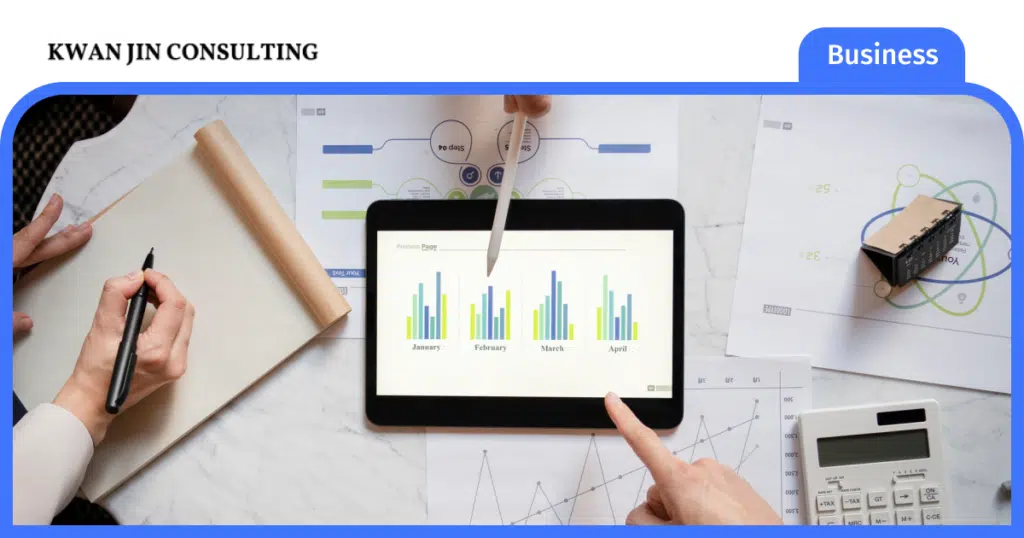As we navigate through 2025, the business landscape continues to evolve at an accelerated pace. Fueled by technological advancements, changing employee expectations, and shifting industry demands, the workplace is undergoing a profound transformation. To remain competitive and ensure sustainable success, leaders must stay ahead of emerging business trends that are reshaping how we work.
Key among these trends are flexible work arrangements, hybrid and remote work models, and asynchronous communication. Embracing these changes not only boosts productivity but also creates a workplace culture that attracts top talent and drives long-term growth.

1. Flexible Work is Here to Stay
One of the most defining business trends in recent years has been the rise of flexible work options.
No longer just a perk, flexible work has become an expectation for many employees in 2025. In fact, studies show that nearly 37% of employees are seeking more flexibility in their work schedules. The desire for a better work-life balance drives this shift, allowing employees to exercise more control over when and where they complete their tasks.
Flexible work arrangements help employees manage personal responsibilities, reduce stress, and increase overall job satisfaction. This trend is particularly beneficial for working parents, caregivers, and individuals with health concerns. Additionally, research indicates that flexible work policies boost productivity and retention rates, creating a win-win for both employees and employers.
For business leaders, embracing flexible work means moving away from traditional office-centric models and adopting a more results-driven approach. Instead of measuring success by hours spent in the office, leaders should focus on performance and outcomes. Allowing employees the autonomy to manage their schedules fosters trust, improves morale, and leads to a more engaged workforce.
2. Hybrid and Remote Work Models Are Evolving
Hybrid and remote work models, which gained widespread popularity during the pandemic, continue to evolve in 2025. Many businesses have recognized the numerous advantages of remote work, including access to global talent, reduced overhead costs, and enhanced workforce diversity. According to recent data, 49% of workers now prefer hybrid work models that blend in-office and remote setups.
Hybrid and remote work allow employees to maintain strong connections to their organization while enjoying the flexibility to work from anywhere. As we move forward in 2025, business leaders must fine-tune their hybrid work strategies to ensure seamless collaboration and sustained productivity. The hybrid model also enables businesses to expand their recruitment efforts, attracting talent from across the globe.
For companies to succeed with hybrid and remote teams, leaders must invest in the right technologies. This includes providing cloud-based collaboration tools, project management platforms, and communication systems to streamline workflows. Balancing the needs of remote workers with in-office teams presents a challenge, but those who successfully manage this balance will position themselves to capitalize on this business trend.
3. Asynchronous Communication
Asynchronous communication is quickly becoming a cornerstone of modern business operations. This trend allows teams to

collaborate and communicate without needing to be online simultaneously, a shift particularly valuable for hybrid and remote teams. Asynchronous tools, such as video messages, recorded presentations, and detailed project notes, are gaining traction for their ability to improve productivity and work-life balance.
In 2025, businesses are increasingly turning to asynchronous communication to reduce the reliance on real-time meetings and instant responses. By allowing employees to engage with content and respond at their own pace, businesses can foster an environment that encourages focus, deep work, and creative problem-solving. Asynchronous communication also helps employees manage their time better, minimizing the burnout caused by endless meetings and email chains.
For business leaders, adopting asynchronous communication requires a cultural shift toward valuing independent work and strategic thinking. By integrating these tools into daily operations, leaders can empower employees to work more efficiently and feel less pressured to respond immediately to messages. This shift not only benefits productivity but also enhances job satisfaction by giving employees greater control over their schedules.
4. Balancing Technology and Human Connection
As technology continues to drive innovation in the workplace, finding a balance between technology and human connection will be crucial in 2025. Hybrid and remote work models make it easier to work from anywhere, but they can also create a sense of isolation if not carefully managed. Maintaining strong interpersonal relationships among team members is essential for fostering a connected and collaborative environment.
Research shows that meaningful connections in the workplace lead to higher engagement and collaboration. As such, business leaders must intentionally create opportunities for employees to engage with one another, even if they are working from different locations. Regular one-on-one check-ins, virtual team-building activities, and informal social interactions outside of work tasks can help bridge the gap and strengthen relationships.
Tools like video calls and instant messaging platforms also play a critical role in maintaining human connections. By prioritizing both technology and personal relationships, leaders can create a more inclusive, supportive, and cohesive workplace culture.

Final Thoughts…
The business landscape in 2025 is evolving rapidly, and staying ahead of trends like flexible work, hybrid and remote models, and asynchronous communication is
is essential for leaders to remain competitive. These trends not only improve employee satisfaction but also drive productivity and growth, creating a more agile and connected workplace.
Leaders must act now to integrate these trends, offering flexible work options, refining hybrid models, and adopting asynchronous communication. By doing so, they can position their organizations for long-term success in an ever-changing business environment.
For businesses seeking tailored strategies to adapt and thrive in the modern workplace, Kwan Sung Jin Consulting offers expert guidance to help you stay ahead of the curve and implement these trends effectively.

